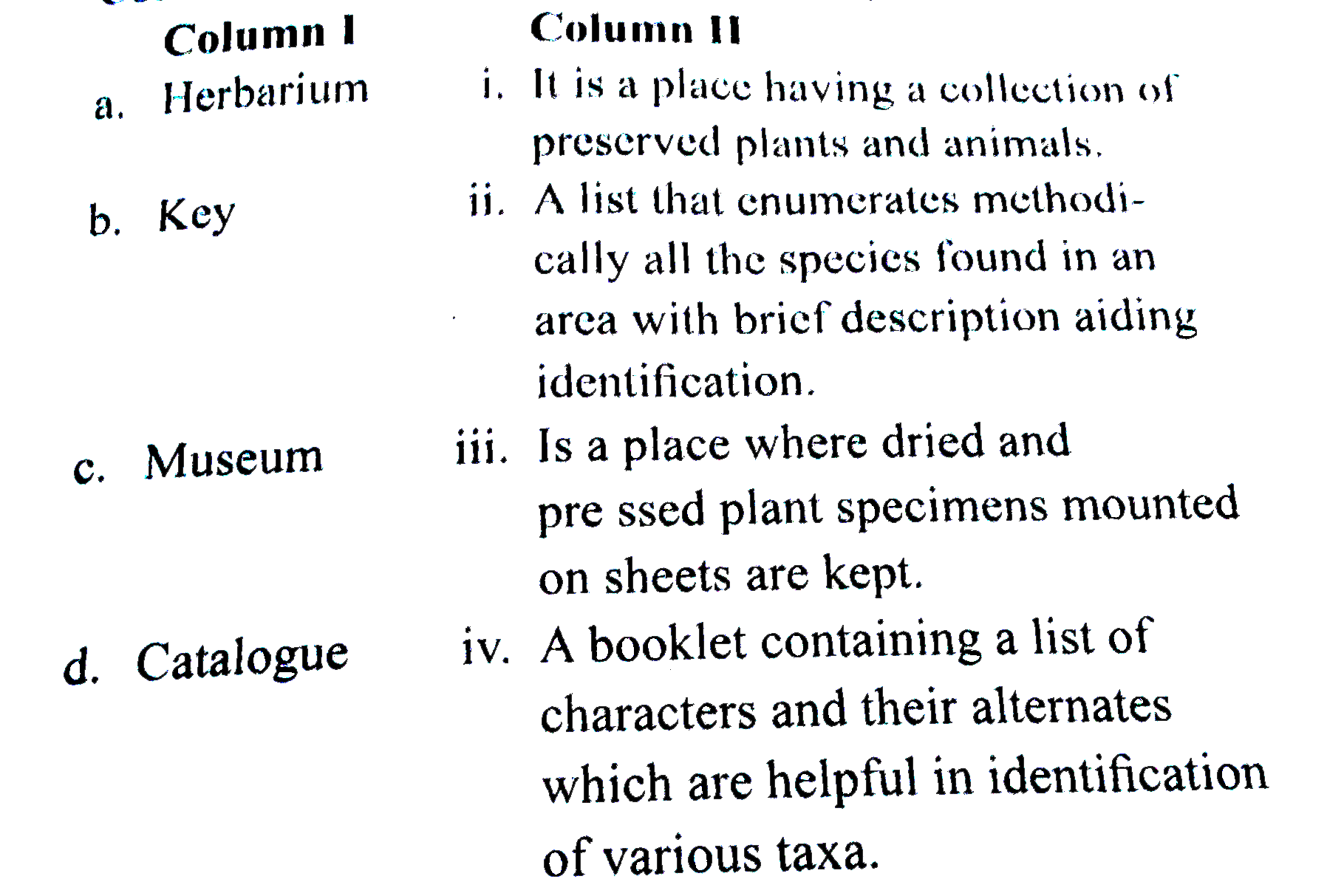Which technique has helped in investigation of Calvin cycle ?
(a) Radioactive isotope technique
(b) Biotechnology technique
(c) Photometric technique
(d) Flashlight experimental technique
Radioactive isotope technique
Biotechnology techinque
Photometric technique
Flash light experimental technique
The correct Answer is:A
To solve the question "Which technique has helped in the investigation of the Calvin cycle?" we need to analyze the options provided and understand the significance of each technique in relation to the Calvin cycle.
1. Understanding the Calvin Cycle:
The Calvin cycle is a crucial part of photosynthesis where carbon dioxide is fixed into organic molecules. It involves a series of biochemical reactions that convert carbon dioxide and ribulose-1,5-bisphosphate (RuBP) into glucose and other carbohydrates.
2. Analyzing the Options:
- (a) Radioactive isotope technique: This technique involves using isotopes, such as Carbon-14, to trace the path of carbon in photosynthesis. Melvin Calvin used this technique to investigate the Calvin cycle.
- (b) Biotechnology technique: While biotechnology encompasses various methods for studying biological processes, it is not specifically linked to the investigation of the Calvin cycle.
- (c) Photometric technique: This technique measures the intensity of light and is not directly related to the biochemical pathways of the Calvin cycle.
- (d) Flashlight experimental technique: This option seems vague and does not correspond to any established scientific method used in the study of the Calvin cycle.
3. Identifying the Correct Answer:
The radioactive isotope technique, specifically the use of Carbon-14, was instrumental in tracing the steps of the Calvin cycle and identifying key products like phosphoglyceraldehyde (PGA). This led to the understanding of carbon fixation in plants.
4. Conclusion:
Based on the analysis, the correct answer to the question is (a) Radioactive isotope technique.
The Calvin cycle is a crucial part of photosynthesis where carbon dioxide is fixed into organic molecules. It involves a series of biochemical reactions that convert carbon dioxide and ribulose-1,5-bisphosphate (RuBP) into glucose and other carbohydrates.
- (a) Radioactive isotope technique: This technique involves using isotopes, such as Carbon-14, to trace the path of carbon in photosynthesis. Melvin Calvin used this technique to investigate the Calvin cycle.
- (b) Biotechnology technique: While biotechnology encompasses various methods for studying biological processes, it is not specifically linked to the investigation of the Calvin cycle.
- (c) Photometric technique: This technique measures the intensity of light and is not directly related to the biochemical pathways of the Calvin cycle.
- (d) Flashlight experimental technique: This option seems vague and does not correspond to any established scientific method used in the study of the Calvin cycle.
The radioactive isotope technique, specifically the use of Carbon-14, was instrumental in tracing the steps of the Calvin cycle and identifying key products like phosphoglyceraldehyde (PGA). This led to the understanding of carbon fixation in plants.
Based on the analysis, the correct answer to the question is (a) Radioactive isotope technique.
Topper's Solved these Questions
- PHOTOSYNTHESIS IN HIGHER PLANTSBOOK - CENGAGE BIOLOGY ENGLISHCHAPTER - PHOTOSYNTHESIS IN HIGHER PLANTSEXERCISE - ASSERTION -REASONING QUESTIONS
5 Videos
- PHOTOSYNTHESIS IN HIGHER PLANTSBOOK - CENGAGE BIOLOGY ENGLISHCHAPTER - PHOTOSYNTHESIS IN HIGHER PLANTSEXERCISE - ARCHIVES
30 Videos
- NEET 2018 PAPERBOOK - CENGAGE BIOLOGY ENGLISHCHAPTER - NEET 2018 PAPEREXERCISE - MCQ
48 Videos
- PLANT GROWTH AND DEVELOPMENT BOOK - CENGAGE BIOLOGY ENGLISHCHAPTER - PLANT GROWTH AND DEVELOPMENT EXERCISE - Archives
28 Videos
Similar Questions
Assertion :In C4 plants, the chloroplasts of bundle sheath cells are granal.
Reason: PS II is mostly found in the appressed part of granum.
View SolutionThe first acceptor of electrons from an excited chlorophyll molecule of photosystem II is
(a) Quinone
(b) Cytochrome
(c) Iron-sulfur protein
(d) Ferredoxin
View SolutionMatch the items given in Column I with those in Column II and select the correct option given below :

View SolutionOpening of floral buds into flowers, is a type of
View SolutionMicropropagation technique is quite helpful for:
View SolutionWhich technique has helped in inverstigation of calvin cycle ?
View SolutionIn biotechnology,Hybridoma technique was developed by
View SolutionWhich technique of Taylors technique of functional foremanship is based
View SolutionWhat are the twocore techniques that enabledbirth of biotechnology?
View SolutionWhich two main techniques are used in biotechnology? Why?
View SolutionWhich new technique of Biotechnology was developed in 1970?
View SolutionWhich technique has helped in inverstigation of calvin cycle ?
View Solutionपोलीमेरेज श्रृंखला अभिक्रिया तकनीक (PCR - technique ) किसके लिए उपयोगी है :-
View SolutionBiotechnology#!#Techniques of Biotechnology
View SolutionWhich technique has helped in inverstigation of calvin cycle ?
View Solution

